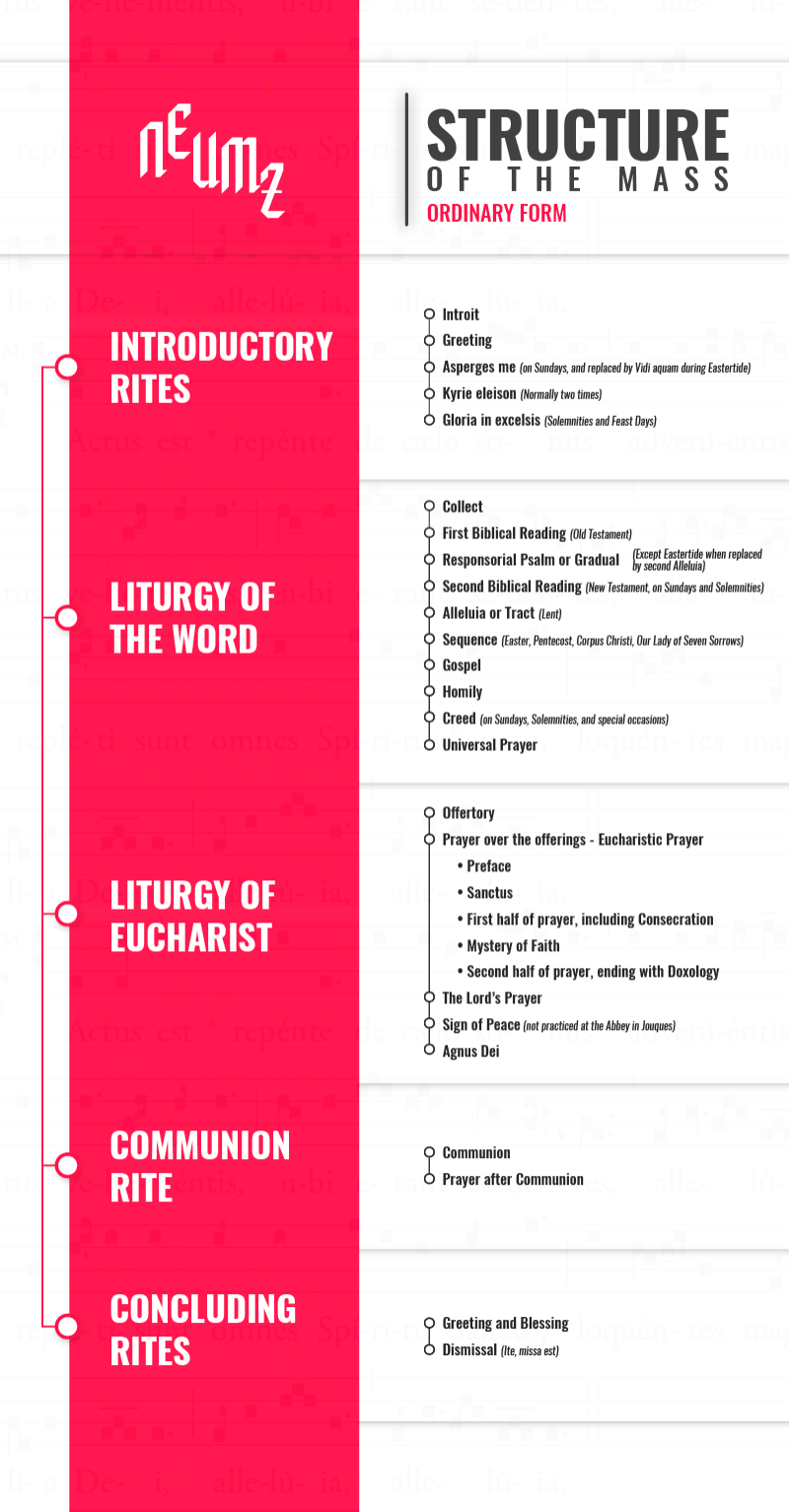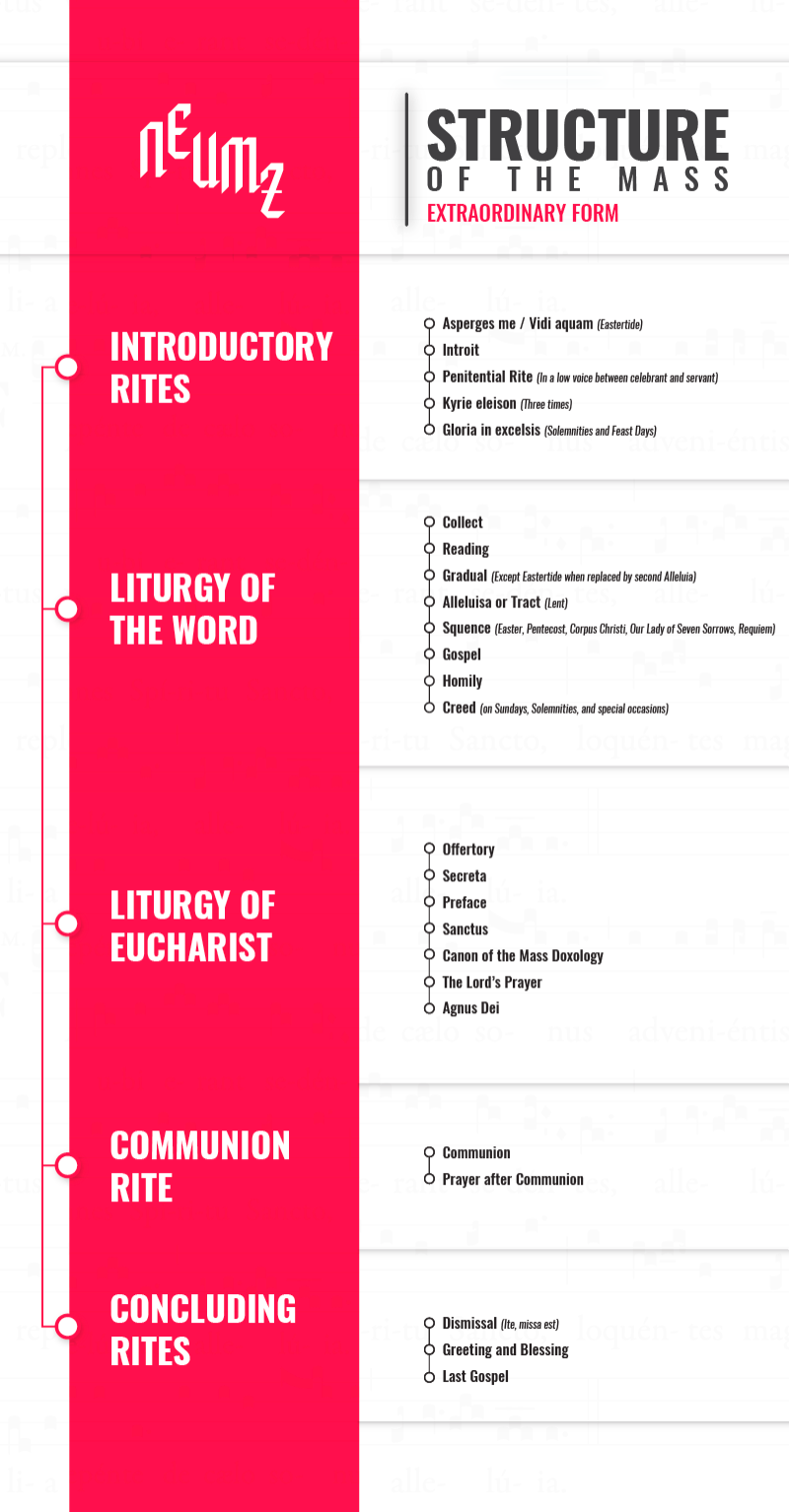Neumz offers all the parts,
sung, chanted, or recited
in Latin of the Mass and the Office.
Thus, for the Mass, the songs of the Ordinary (Kyrie, Gloria, Credo, Sanctus, and Agnus Dei) and of each day’s Propers (Introitus, Graduale, Tractus, Alleluja, Offertorium and Communio) can be heard according to the liturgical cycle.
The Mass is the main form of worship in the Roman Catholic Church, and is divided into two main parts: the liturgy of the Word, which includes Biblical readings and often a sermon, and the liturgy of the Eucharist, culminating in the sacrament of Holy Communion.
The word ‘mass’ comes from the Latin ‘missa’ used at the end of the service to dismiss the congregation: Ite, missa est. The word ‘Catholic’ means ‘universal’, and the idea behind the Latin Mass was to worship in one universal language that could be understood by anyone in any part of the world. Following the Second Vatican Council of the 1960s, it became more common for the Mass to be said in the vernacular.
In the tradition of Gregorian plainchant, all sections of the Mass may be sung, including the Proper of the Mass. Many of the most intricate and complex Gregorian chants are found in parts of the Mass with shorter, repeating texts such as the Kyrie and the Agnus Dei; in expansive texts such as the Gloria and the Credo; and in Offertories, some of the oldest examples of which are particularly ornate.
Also referred to as the “Novus Ordo”, or the “Mass of Paul VI”.
Also referred to as the “Vetus Ordo”, “Traditional Rite”, “Tridentine Mass”, “Traditional Latin Mass”, or “Mass of Saint Pius V”.
The Ordinary of the Mass varies very little regardless of the liturgical context or season, and consists of five main sections, often used in musical Mass settings: the Kyrie, Gloria, Credo, Sanctus and Agnus Dei.
The Proper of the Mass encompasses other sections that may vary according to the liturgical context or time of year, including the Introit, Graduale, Alleluia (except Lent), Tract (Lent), Offertory and Communion.
| Lent, Liturgy and Gregorian Chant by Catherine Restrepo |
History of Gregorian Chant A short introduction |
| How to read Square Note Notation Infographic |
Other Chants – Western and Eastern Traditions Catholic Rites and Variations |